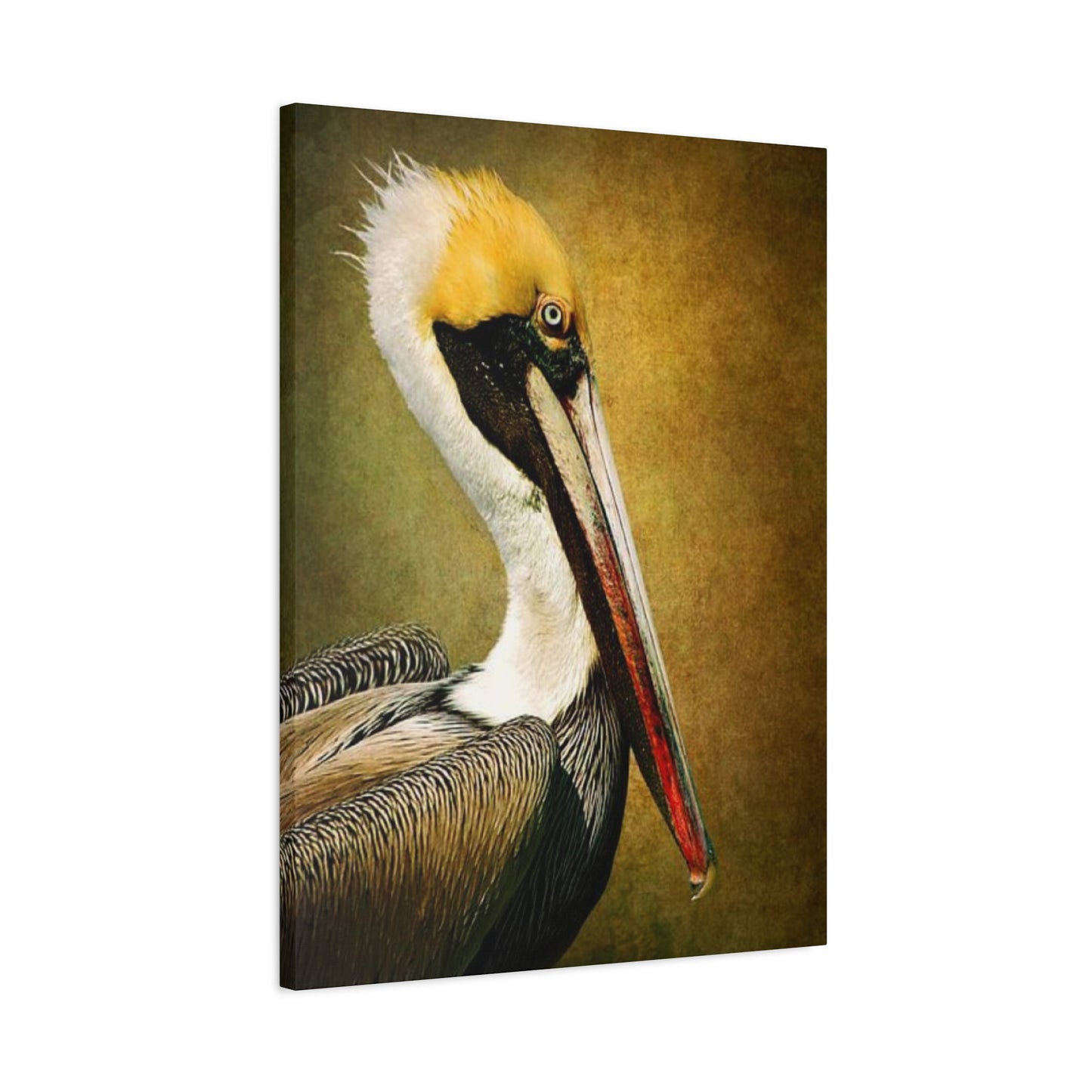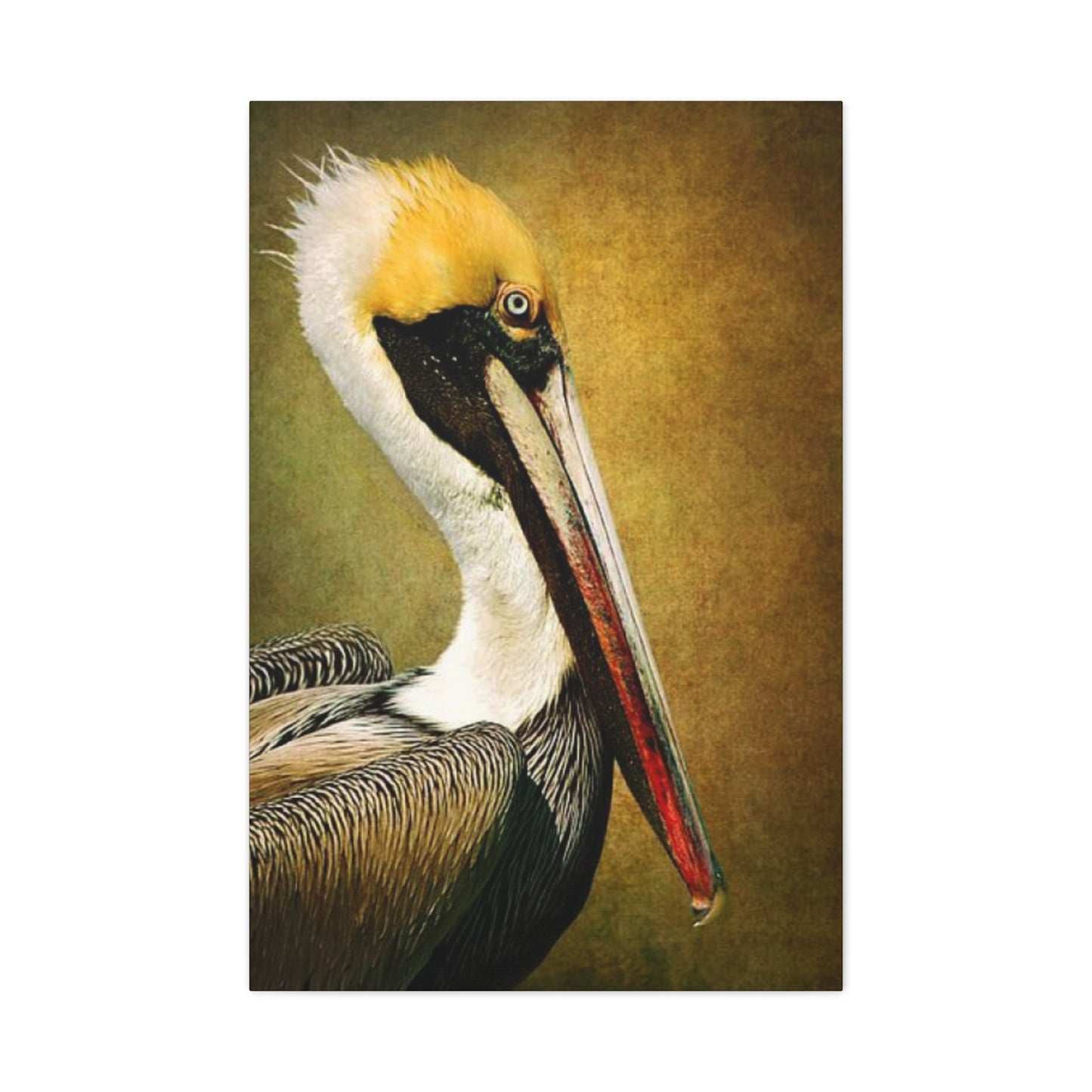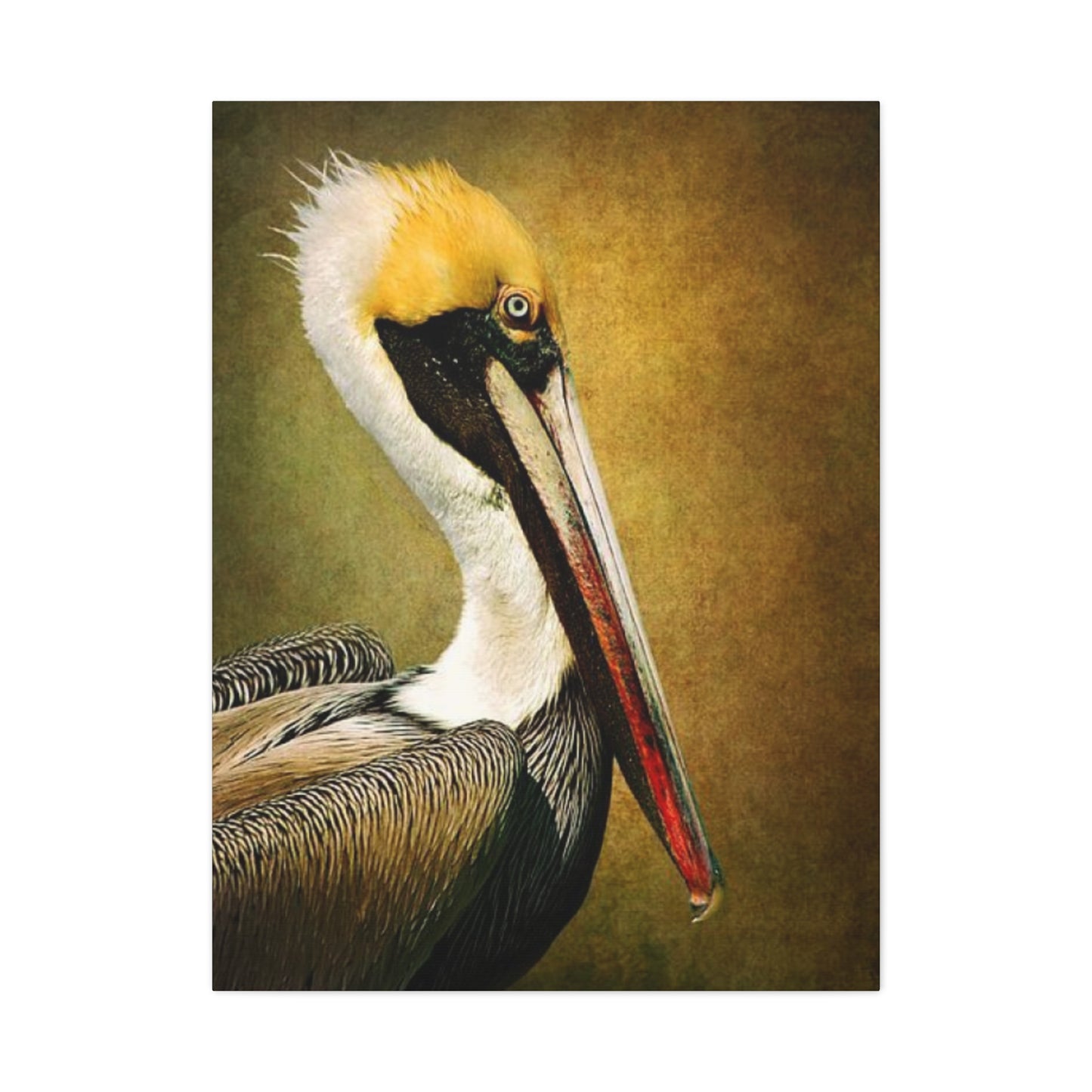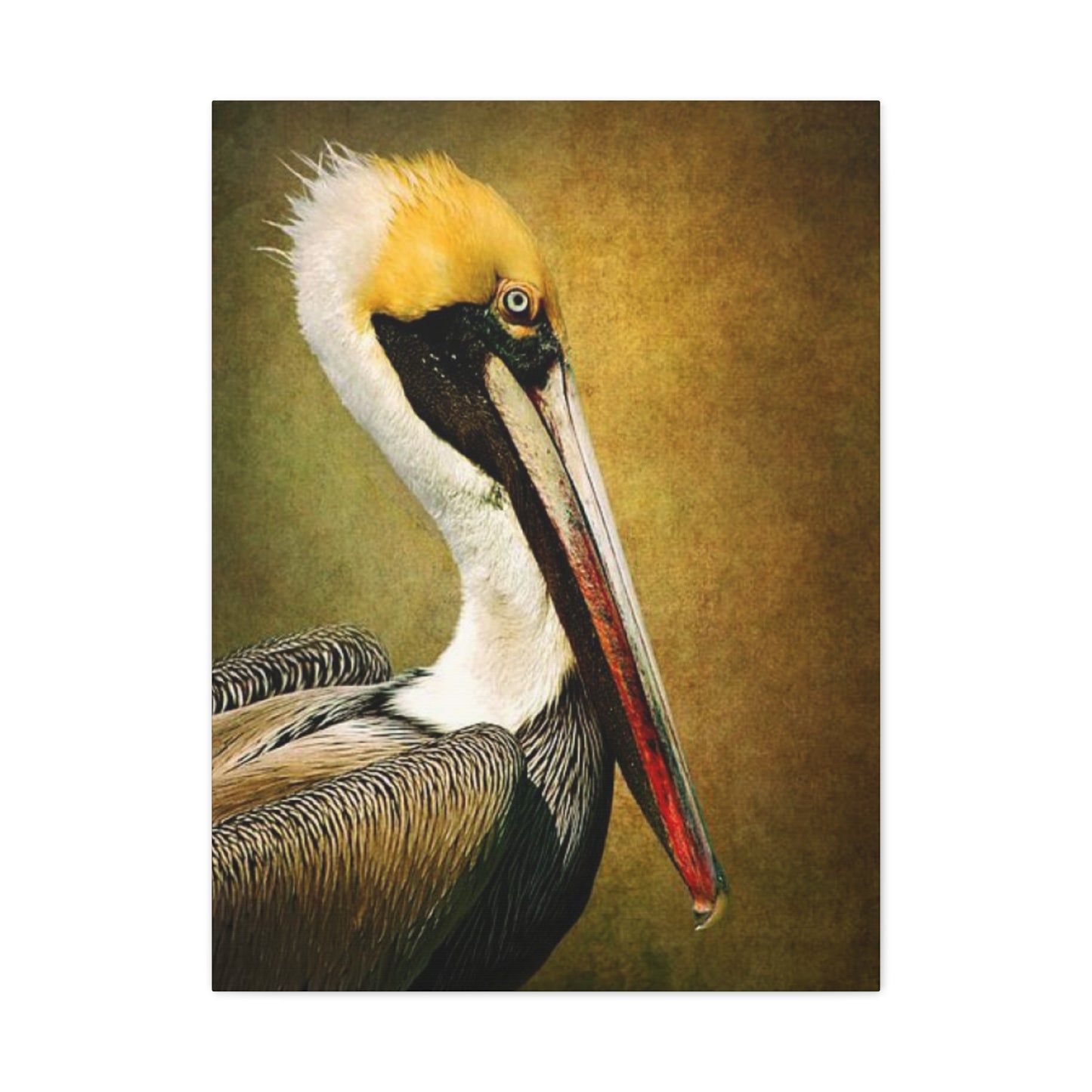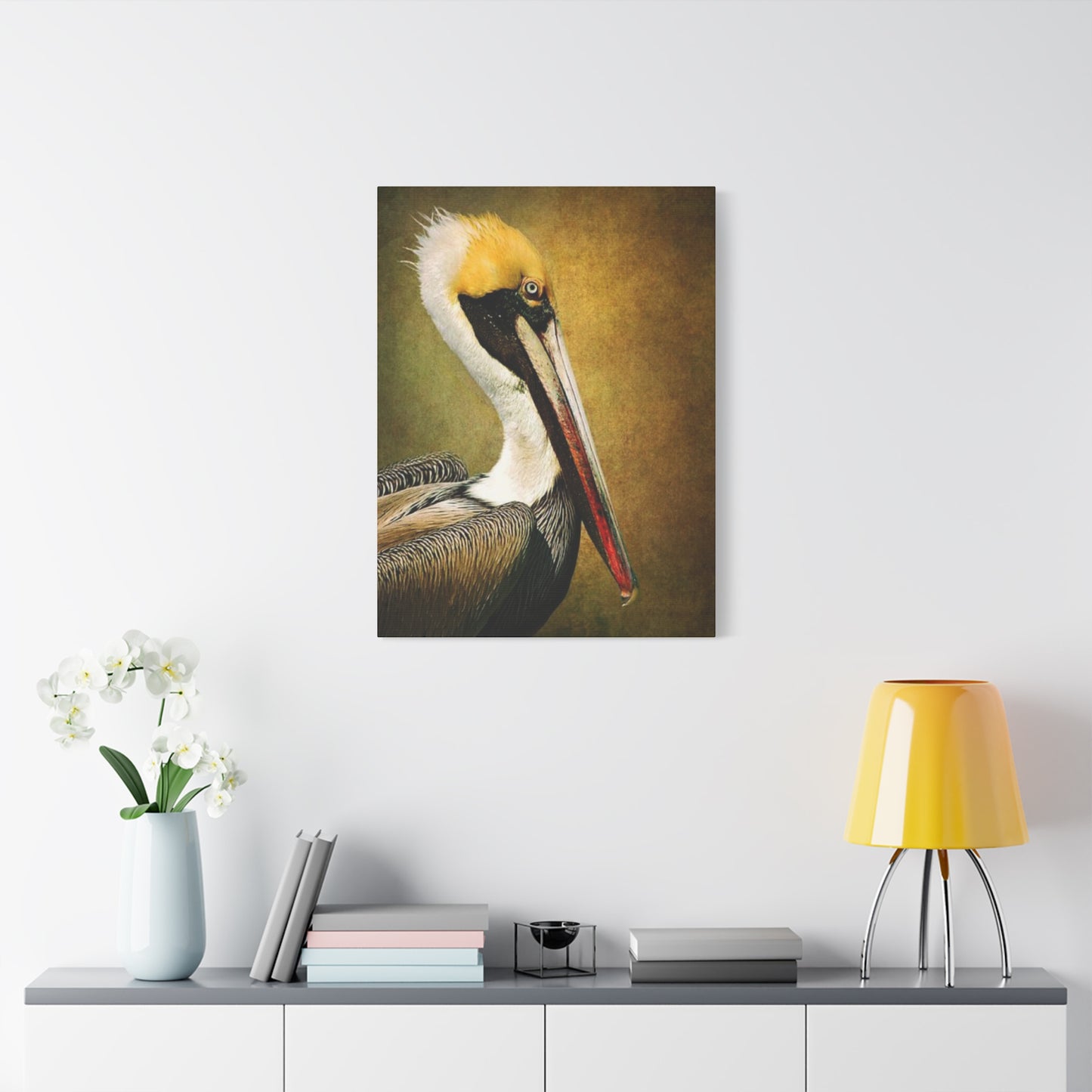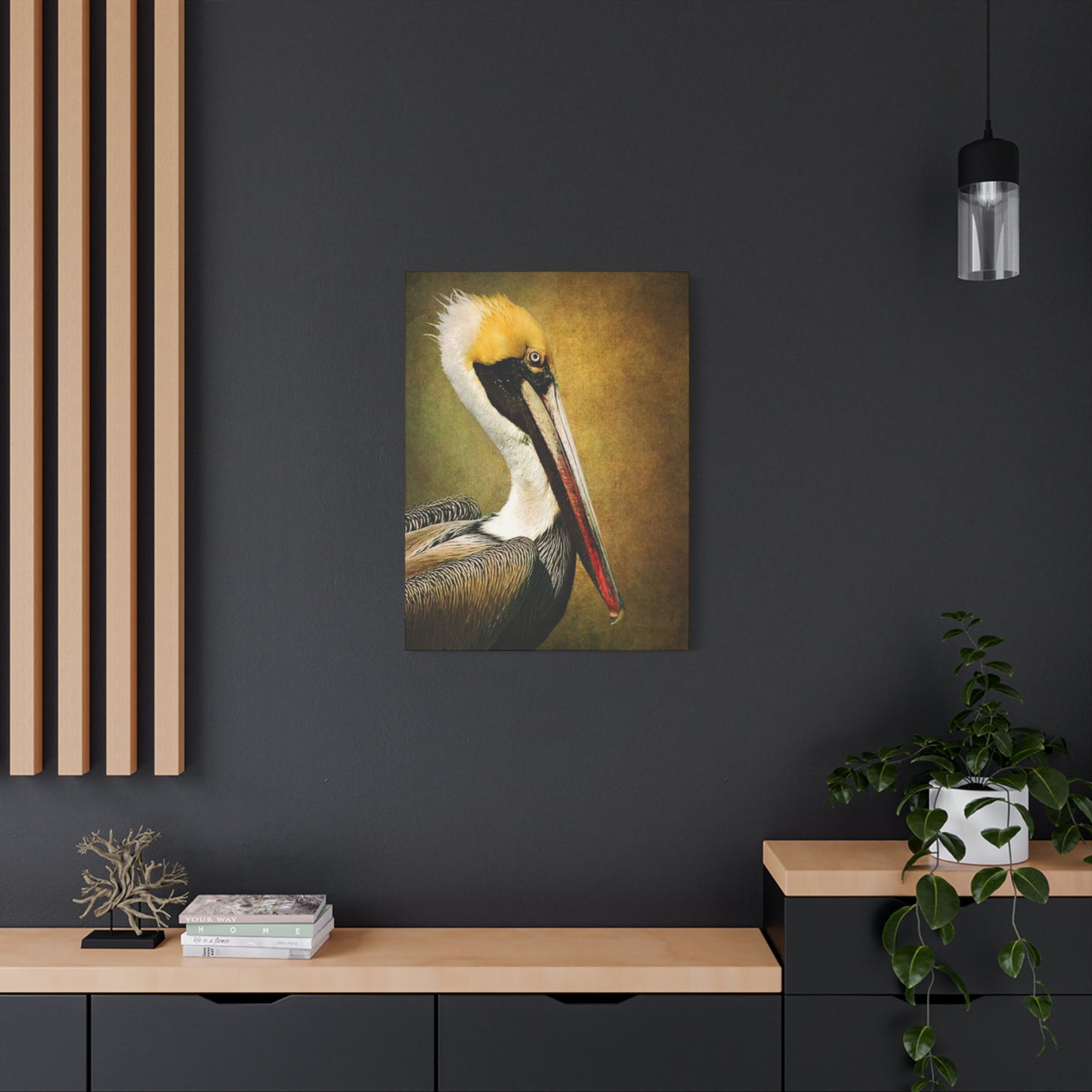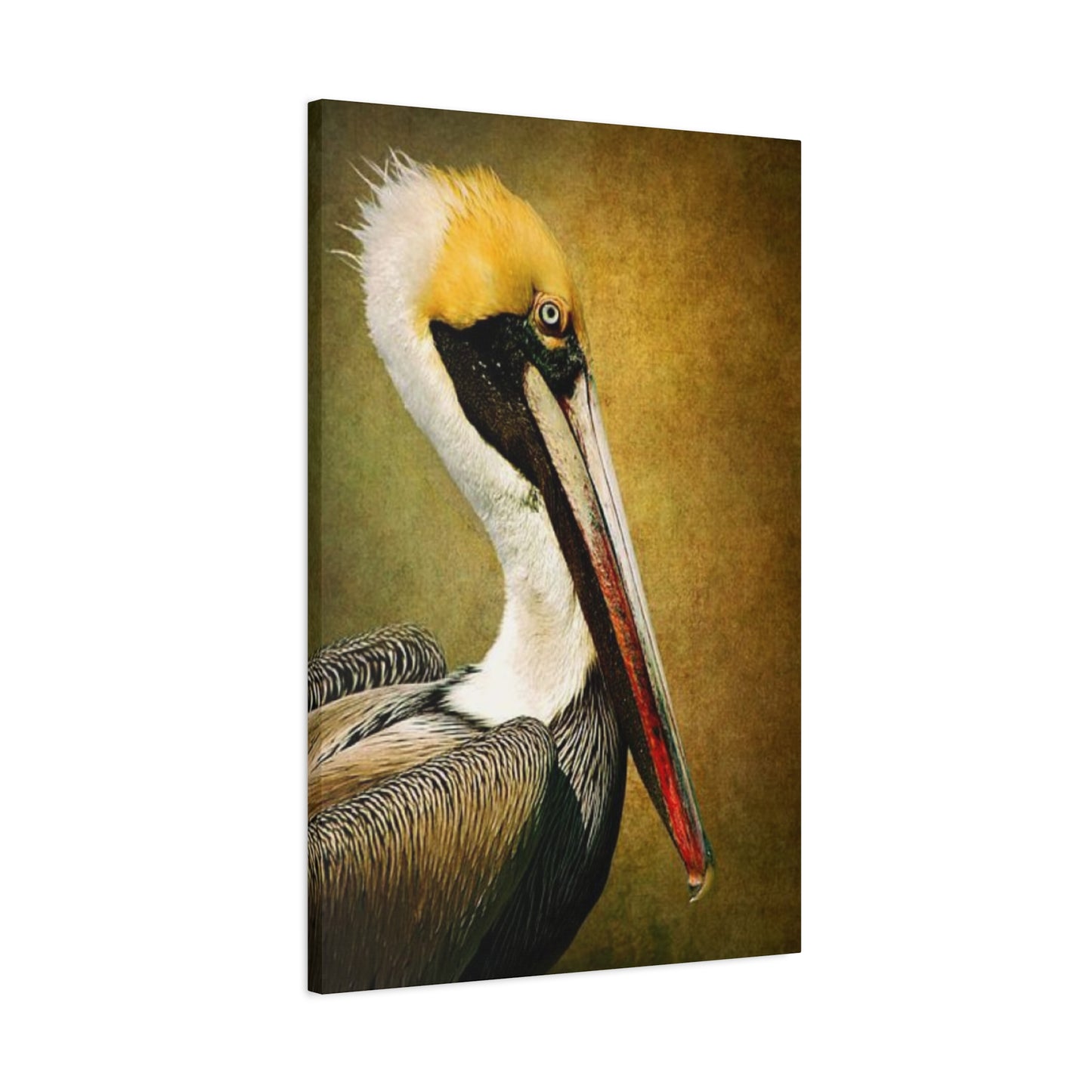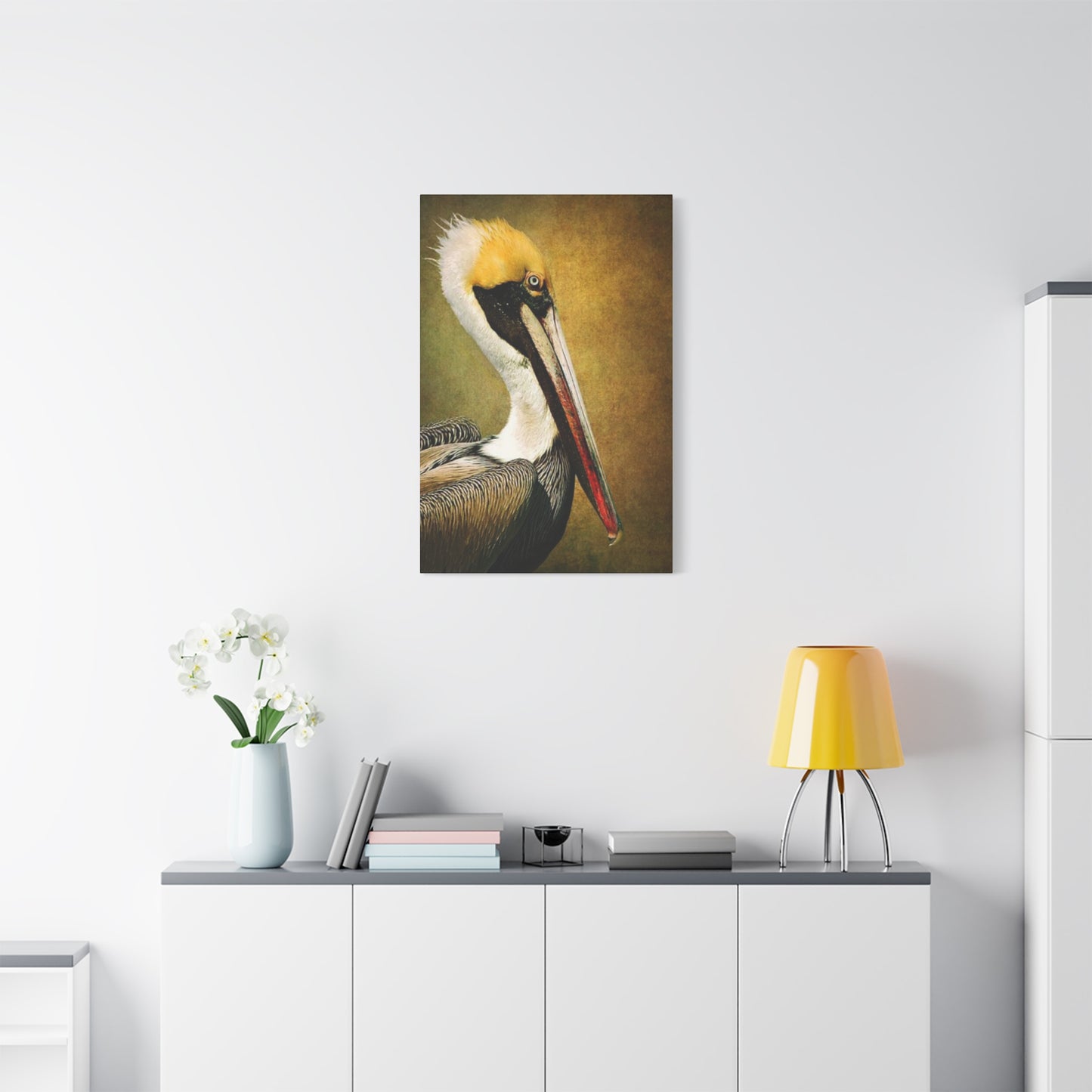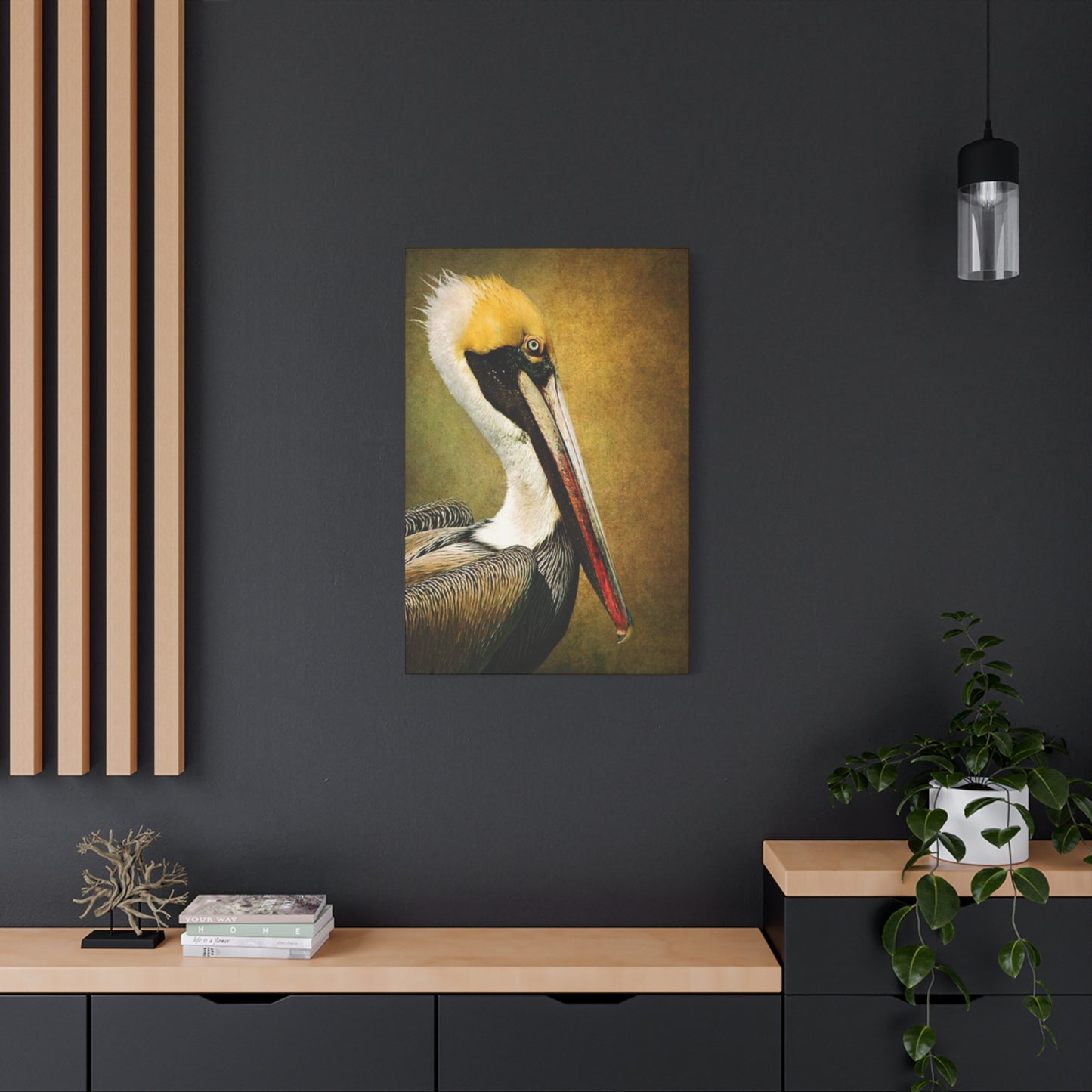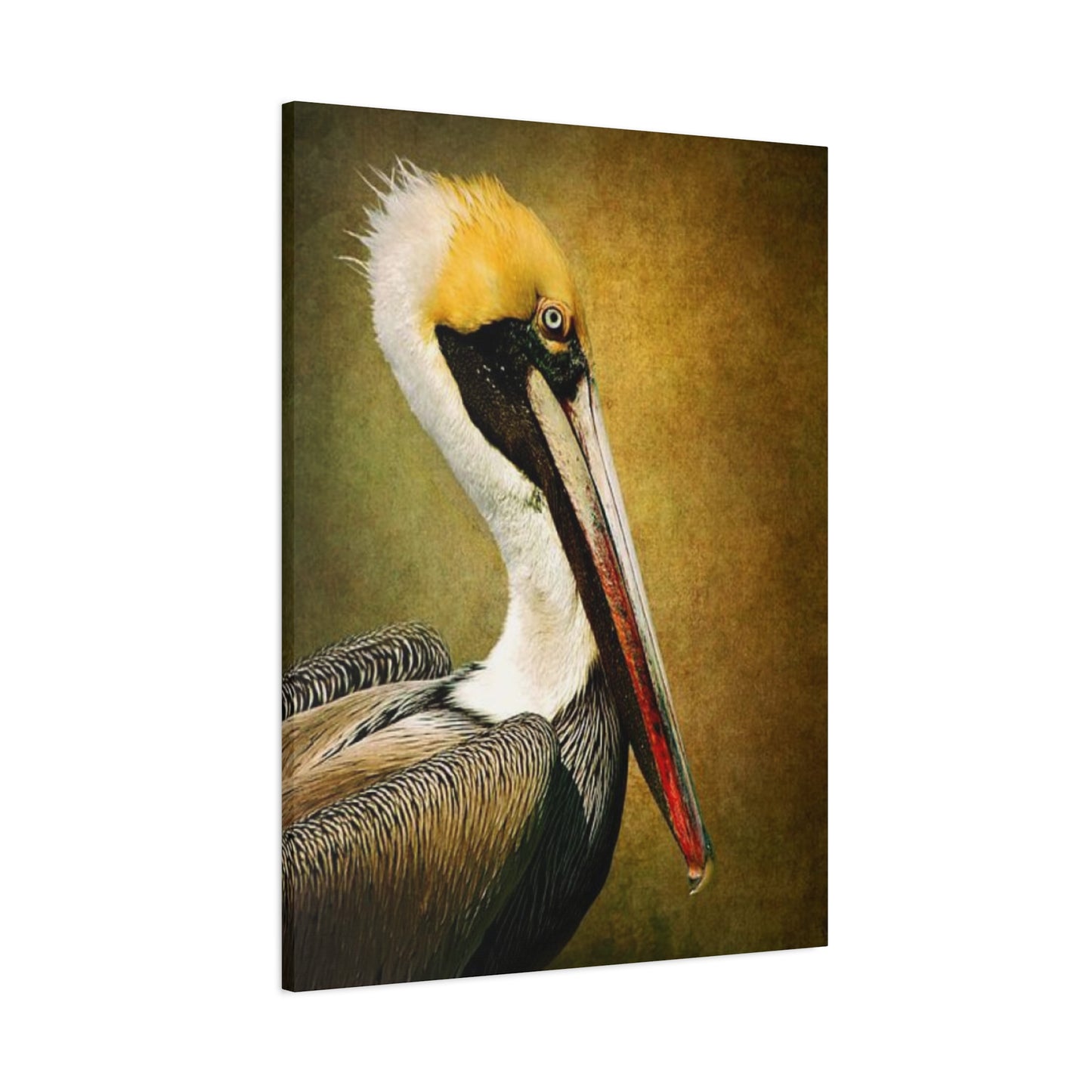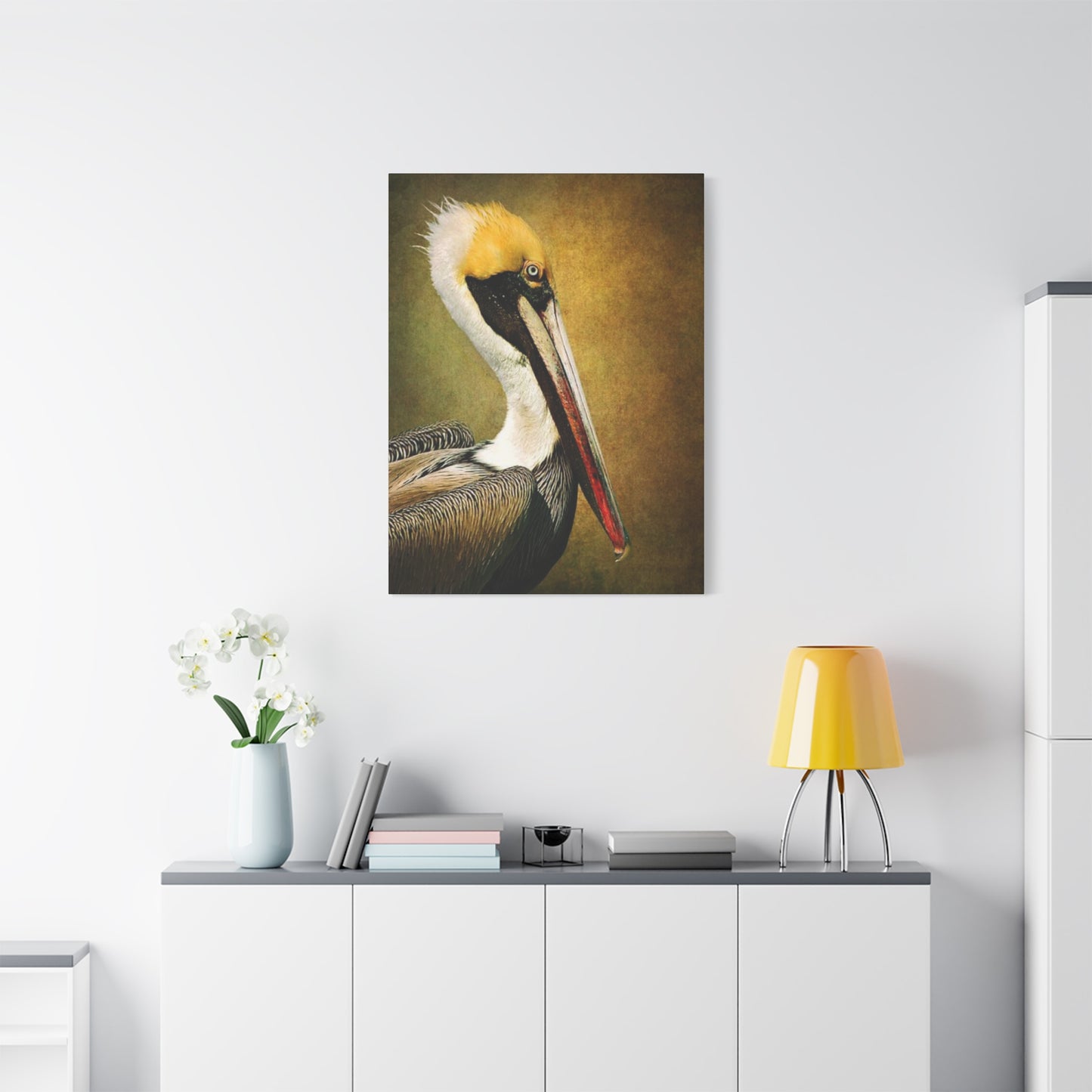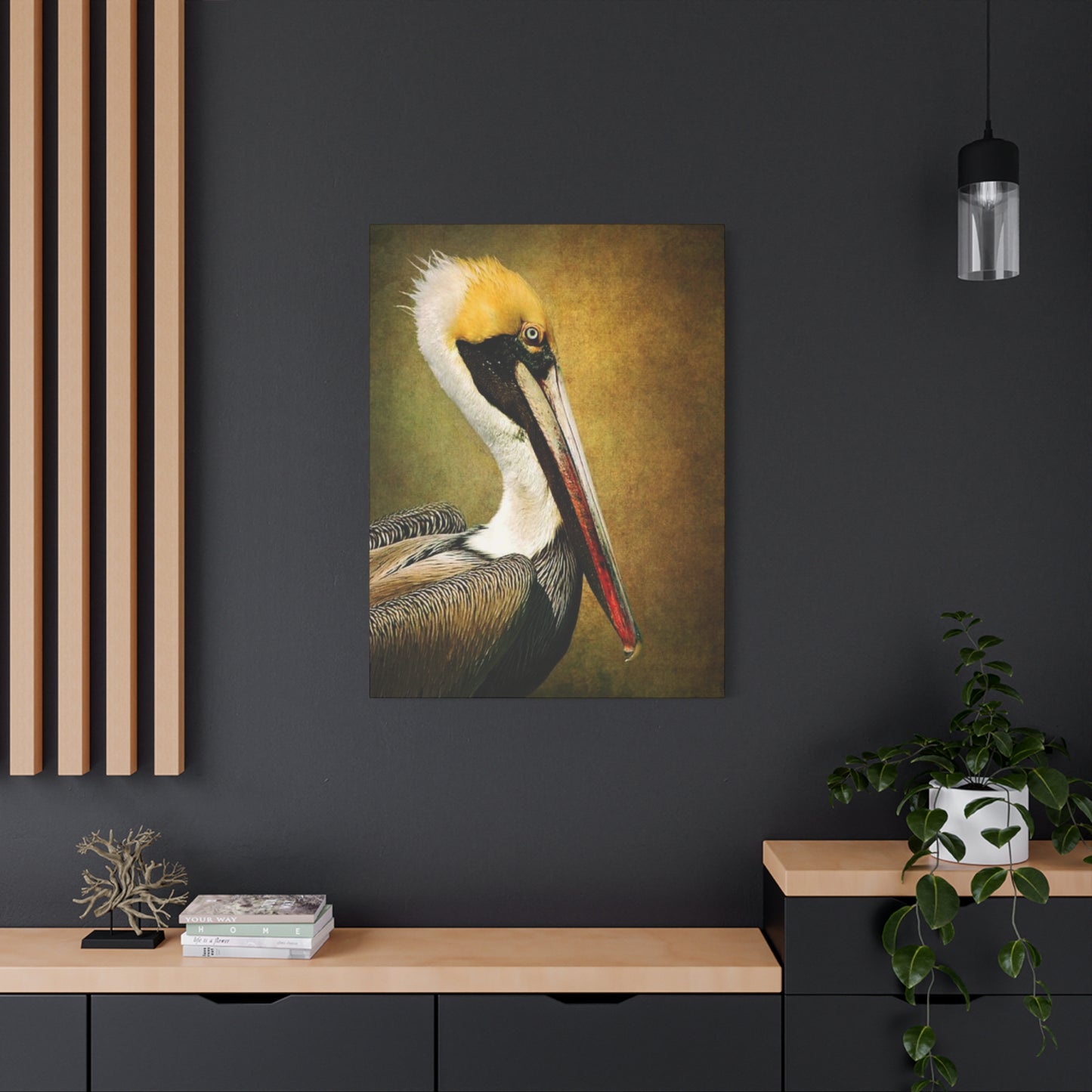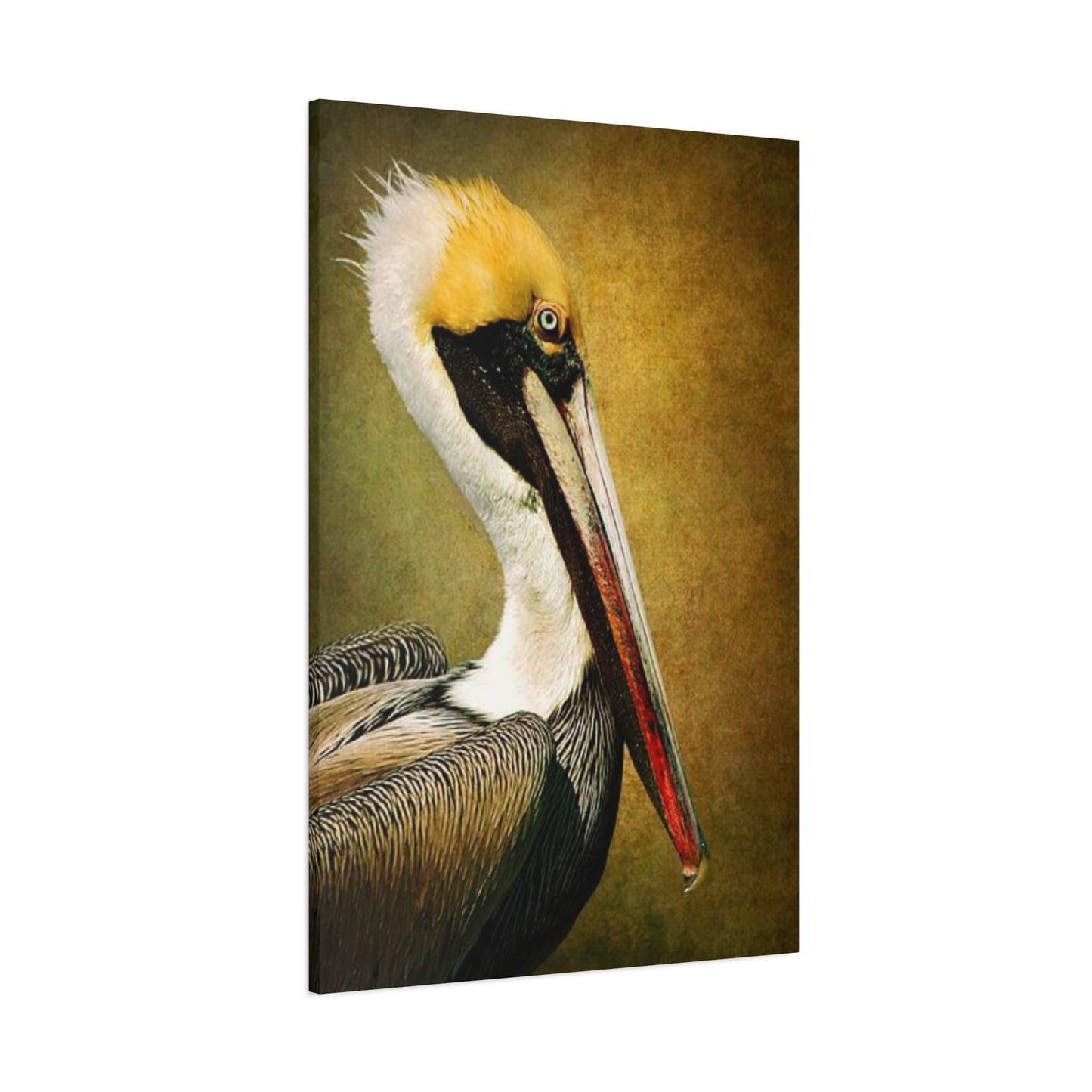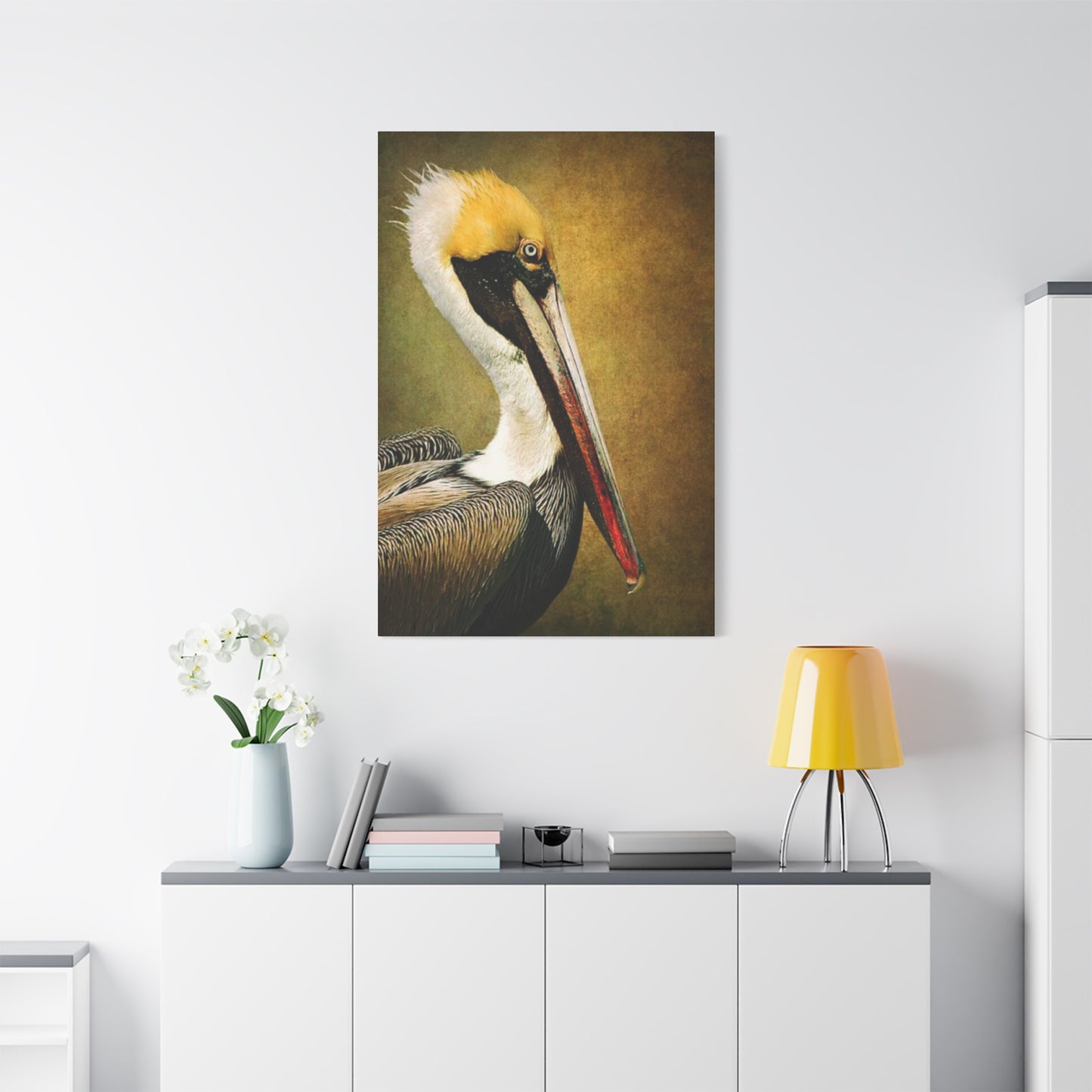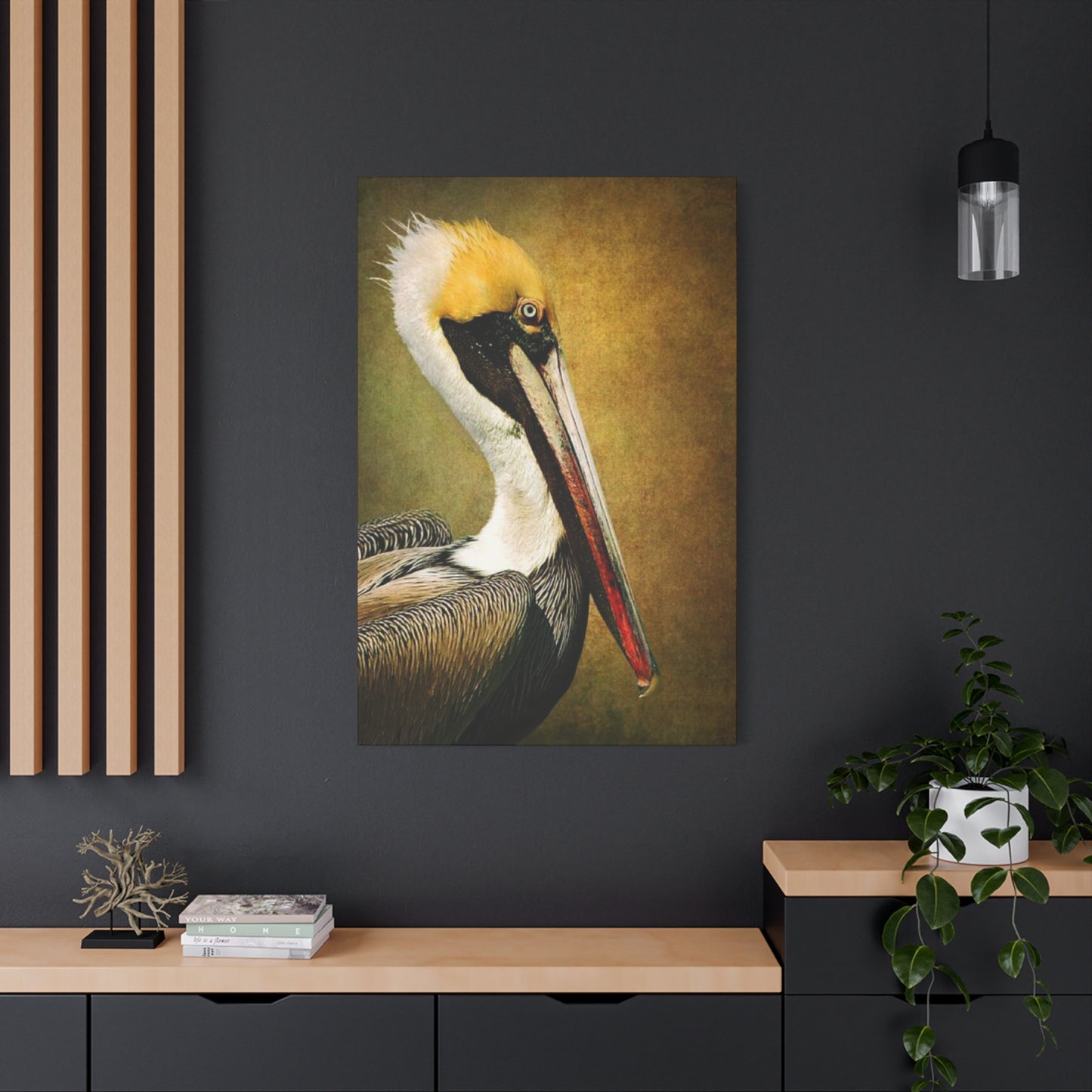A Definitive Guide to Long-Beak Pelican Candid Close-Up Drawing Wall Art
The allure of the natural world has perennially captivated the human spirit, and among its most fascinating subjects is the majestic pelican. This is not merely about appreciating a bird; it's about capturing a moment of untamed grace and translating it into a form that can enrich our daily lives. The specific artistry found in a long-beak pelican candid close-up drawing, when rendered as wall art on canvas prints, offers a unique portal into the wild. It transforms a simple dwelling into a sanctuary of natural elegance. This comprehensive exploration delves into every facet of this particular art form, from the artist's initial sketch to the final print hanging in a place of prominence.
We will investigate the profound connection between wildlife illustration and personal environments, the technical mastery required to capture a pelican's essence, and the enduring appeal of canvas as a medium. This journey is for the art aficionado, the nature lover, and anyone seeking to infuse their surroundings with a piece of the serene and powerful coastal world. It is an ode to the intricate beauty of avian life and the powerful statement it can make as a central piece of visual storytelling within a home.
Unveiling the Majesty of Pelican Artistry
The pelican, with its distinctive long beak, expansive gular pouch, and dignified posture, presents a compelling subject for artists. The representation of this bird in art is not a recent phenomenon; it carries with it a history rich with symbolism and admiration. When we speak of pelican artistry, we are discussing more than a simple depiction. We are exploring an attempt to capture its soul. The majesty of the pelican lies in its dual nature: it is a powerful, prehistoric-looking creature capable of soaring high above the coastlines, yet it also possesses a serene, almost meditative quality when at rest. Artists are drawn to this contrast. A long-beak pelican drawing, particularly a candid close-up, allows the viewer to bypass the typical seascape and focus entirely on the creature itself.
This focus magnifies its intricate details—the texture of its feathers, the intelligent gleam in its eye, the weathered lines of its formidable beak. This form of artistry elevates the bird from a mere element of a landscape to the singular, commanding subject of a masterpiece. The choice to render it as a drawing, rather than a photograph or a painting, adds another layer of interpretation. A drawing is a direct translation of the artist's perception, a dance between hand and eye that imbues the subject with a unique energy and personality. The lines, shading, and composition are all deliberate choices that convey a specific mood, transforming a biological specimen into a character with a story to tell. This is the true majesty of pelican artistry: its ability to foster an intimate connection between the viewer and a creature of the wild.
The Essence of Authenticity in Candid Portraits
The term "candid" is crucial when discussing the profound impact of wildlife art. A candid portrait, by its very nature, captures a subject in an unposed, natural state. This approach is a departure from traditional, formal wildlife illustration where animals are often depicted in stoic, idealized postures. A candid close-up of a long-beak pelican offers a glimpse into its genuine existence. It might show the bird preening its feathers, gazing intently at a distant point on the horizon, or ruffling its plumage in a gust of wind. These are the fleeting, unguarded moments that reveal the true character of the animal.
The authenticity derived from this approach is what creates a powerful emotional resonance. Viewers feel as though they are not just observing a picture, but are privileged witnesses to a private moment in the life of a wild being. This sense of intimacy is the core of its appeal. The artist's challenge in creating such a piece is significant. It requires immense patience, a deep understanding of animal behavior, and the skill to sketch rapidly yet accurately. The goal is to preserve the spontaneity of the moment. Every pencil stroke, every shadow must contribute to the feeling of a lived experience rather than a sterile study. When this authenticity is successfully translated onto a canvas print, it brings a dynamic and living energy into a room, a stark contrast to static, posed art.
The Transformative Journey from Sketch to Wall Statement
The path from a simple preliminary sketch to a commanding piece of wall art is a journey of transformation and refinement. It begins with the artist's vision, often born from direct observation or a series of field studies. The initial drawing of a long-beak pelican is a raw, expressive act, a flurry of lines and tones aimed at capturing the essence of the bird's form and character. This foundational sketch is where the artistic soul of the piece resides. However, to become a statement piece for a home, this intimate drawing must undergo a meticulous process of conversion. The first step is often digitization, where the original artwork is scanned at an extremely high resolution.
This may involve minor adjustments to contrast or brightness to ensure the final print is a faithful representation of the artist's intent. The selection of the medium is the next pivotal decision. Opting for a canvas print lends the artwork a tangible, textural quality that flat paper cannot replicate. The weave of the canvas interacts with the printed image, adding depth and a classic, painterly feel to the drawing. The final transformation occurs when the canvas is stretched over a wooden frame, turning the two-dimensional image into a three-dimensional object ready to command attention.
The Lasting Charm of Canvas Prints in Contemporary Homes
Canvas has been the preferred medium for artists for centuries, and its appeal has not waned in the contemporary era. The lasting charm of canvas prints in modern habitations stems from their unique combination of traditional texture and modern versatility. Unlike glossy photographic prints or framed paper art, a canvas print possesses an inherent artistic weight and substance. The subtle, woven texture of the canvas material diffuses light, reducing glare and giving the artwork a soft, sophisticated finish. This quality makes a long-beak pelican drawing feel less like a reproduction and more like an original piece of art. The tactile nature of canvas adds a layer of depth and warmth to the image, making it more inviting and engaging to the eye.
Furthermore, canvas prints offer a clean, frameless presentation that integrates seamlessly with a wide range of decorative styles, from minimalist to rustic. The gallery-wrapped edge, where the image extends around the sides of the wooden stretcher bars, creates a polished, three-dimensional look that is both modern and timeless. This removes the need for a traditional frame, which can sometimes distract from the artwork itself. Durability is another significant factor in their enduring popularity. Modern canvas prints are made with high-quality, archival-grade materials and pigment-based inks that resist fading over time, ensuring the vibrancy and detail of the pelican drawing will be preserved for decades.
The Psychological Influence of Avian Art on Living Environments
The art we choose to display in our homes does more than just fill a blank wall; it actively shapes the atmosphere and influences our psychological state. Avian art, particularly depictions of wild birds like the long-beak pelican, can have a profoundly positive effect on a living environment. Birds are often associated with freedom, transcendence, and a connection to the natural world. Introducing these themes into a home can foster a sense of calm, spaciousness, and liberation from the stresses of daily life. A candid close-up of a pelican, in particular, brings with it the serene and expansive feeling of the coast. The image can evoke subconscious memories and associations with the ocean—the sound of waves, the scent of salt in the air, the feeling of open skies.
This can create a tranquil, meditative mood in a room, making it a more restorative and peaceful place to be. On a deeper level, wildlife art reminds us of our connection to a world beyond our own constructed environments. It can inspire a sense of wonder and curiosity about nature, promoting a more mindful and appreciative outlook. A detailed drawing encourages close observation, inviting the viewer to pause and notice the intricate beauty of the pelican's form. This act of mindful looking can be a source of mental quiet and relaxation.
Cultivating Harmony: Integrating Nature-Inspired Wall Art
Successfully integrating nature-inspired wall art, such as a long-beak pelican canvas print, into a home's aesthetic involves more than simply hanging it on a nail. It's about cultivating a sense of harmony between the artwork and its surroundings. The goal is to create a cohesive environment where the art feels like a natural extension of the room, rather than an afterthought. One of the first considerations is placement. A large, statement piece like a pelican close-up often works best as a focal point. Placing it above a sofa, a bed, or a fireplace mantel immediately draws the eye and anchors the room. The height is also crucial; the center of the artwork should ideally be at eye level for an average person, which is typically around 57 to 60 inches from the floor. This encourages a direct and personal engagement with the piece. The surrounding color palette is another key element.
A monochromatic pelican drawing, rendered in shades of black, white, and gray, is incredibly versatile. It can create a dramatic contrast in a room with bold colors, or it can contribute to a serene, neutral scheme. You can pull from the subtle tones within the drawing itself—soft grays, deep charcoals, crisp whites—and use these as accent colors in other elements like cushions, throws, or decorative objects to create a unified look. Lighting plays a vital role in showcasing the artwork. Natural light is ideal, but avoid placing the canvas in direct, prolonged sunlight, which can cause fading over time. For artificial lighting, consider a dedicated picture light or track lighting with an adjustable head. This illuminates the artwork, highlighting the details of the drawing and the texture of the canvas, and ensuring it remains a captivating feature even in the evening.
A Glimpse into the History of Avian Depictions in Decorative Arts
The fascination with birds is deeply embedded in human history, and their depiction in decorative arts is a tradition that spans millennia and cultures. From the stylized falcons in ancient Egyptian tombs symbolizing divine power to the delicate cranes on Chinese silk screens representing longevity and good fortune, birds have always been powerful symbols and cherished decorative motifs. The long-beak pelican itself has a unique and rich history in art and symbolism. In medieval Europe, the pelican was adopted as a potent Christian symbol of self-sacrifice and charity. It was believed that in times of famine, a mother pelican would pierce her own breast to feed her starving young with her blood.
This allegory for Christ's sacrifice made the pelican a common feature in religious art, carvings, and heraldry. During the Age of Exploration and the subsequent rise of natural history in the 17th and 18th centuries, the approach to depicting birds shifted. Artists like John James Audubon embarked on ambitious projects to document the avian world with unprecedented scientific accuracy and artistic flair. Their work moved away from purely symbolic representation towards a more realistic, detailed portrayal of birds in their natural habitats.
This era laid the groundwork for contemporary wildlife art. The candid close-up drawing of a pelican we appreciate today is a direct descendant of this tradition, blending scientific observation with personal artistic interpretation. It honors the creature's true form while also capturing a fleeting, intimate moment, a style made popular by the advent of wildlife photography and a modern desire for authenticity. Displaying such a piece connects a contemporary home to this long and storied history of human admiration for the avian world.
Deconstructing the Symbolism of the Pelican
The pelican is an animal rich in symbolic meaning, and understanding these layers can add significant depth to the experience of viewing and owning a piece of pelican wall art. Beyond its historical Christian symbolism of sacrifice and resurrection, the pelican carries a multitude of other connotations across different cultures and belief systems. As a coastal bird, it is fundamentally linked to the ocean, and therefore embodies the qualities of the water element: intuition, emotion, and the flow of life.
Its ability to move effortlessly between three realms—the sky (flying), the earth (nesting), and the water (feeding)—marks it as a creature of transition and connection. It can symbolize the ability to navigate different states of consciousness or to find balance between the spiritual and material worlds. The pelican's cooperative fishing techniques in some species have also led to it being seen as a symbol of teamwork, generosity, and social responsibility. These birds work together to herd fish into shallow waters, demonstrating a sophisticated level of communication and community. A drawing of a solitary pelican, however, can evoke different feelings.
A close-up portrait might emphasize contemplation, self-reliance, and poise. Its calm demeanor and focused gaze can be interpreted as a reminder to be mindful, patient, and aware of one's surroundings. The gular pouch, its most distinctive feature, can also be seen as a symbol of abundance, nourishment, and the capacity to hold and provide for oneself and others. When you bring a long-beak pelican canvas print into your home, you are not just introducing an image of a bird; you are inviting in a host of powerful, positive archetypes that have resonated with humanity for centuries.
The Art of Scale: Sizing Your Pelican Canvas Print for Maximum Impact
Choosing the correct size for your long-beak pelican canvas print is one of the most critical decisions in ensuring it makes the desired impact within your living environment. The scale of the artwork relative to the wall and the surrounding furniture can dramatically alter its effect. A print that is too small can get lost on a large wall, feeling insignificant and failing to create a focal point. Conversely, a piece that is too large can overwhelm a room, making it feel cramped and unbalanced. A general rule of thumb for hanging art above furniture like a sofa or headboard is to choose a piece that is approximately two-thirds to three-quarters the width of the furniture.
This creates a pleasing sense of proportion and visually connects the art to the furniture below it. For a large, empty wall, you have more freedom. You could opt for a single, oversized canvas to create a dramatic, high-impact statement. An expansive close-up of a pelican's head and beak can be incredibly powerful at a large scale, allowing the viewer to appreciate every detail of the artist's work. Alternatively, you could create a gallery wall arrangement.
This might involve a central, medium-sized pelican print surrounded by smaller pieces of related art or photography. When planning the scale, it's helpful to use a practical visualization technique. You can cut out a piece of paper or cardboard to the dimensions of the canvas you are considering and temporarily tape it to the wall. This allows you to step back and assess the size and proportion in the actual context of the room before making a purchase. Ultimately, the right scale is about achieving balance and ensuring the artwork commands the right amount of attention to fulfill its role in the room's overall design.
The Expressive Power of the Monochromatic Palette
While some art relies on a vibrant spectrum of colors, a monochromatic palette—one based on a single color with its various tints, shades, and tones—possesses a unique and profound expressive power. A long-beak pelican drawing rendered in the classic monochrome of black, white, and varying shades of gray is a perfect example of this. By stripping away the distraction of color, the artist forces the viewer to focus on other fundamental elements of the artwork: form, line, texture, and the interplay of light and shadow. This simplification can actually lead to a more intense and dramatic visual experience. The contrast between the deepest blacks and the brightest whites creates a powerful dynamic energy.
The subtle gradations of gray in between are used to sculpt the form of the pelican, giving it weight, volume, and a sense of three-dimensionality. The absence of color also lends the artwork a timeless, classic quality. A black and white drawing feels elegant, sophisticated, and can seamlessly integrate into almost any decorative scheme without clashing with existing colors. It evokes a sense of nostalgia, reminiscent of classic photography and early illustrations. Furthermore, a monochromatic palette can be more emotionally evocative. It can create a mood that is contemplative, serene, dramatic, or poignant. For a candid close-up of a pelican, the lack of color can enhance the focus on the bird's expression and character, allowing its personality to take center stage.
Curating an Avian Gallery Wall in Your Abode
Creating a gallery wall is a wonderful way to display a collection of art and tell a visual story. An avian-themed gallery wall, with a long-beak pelican canvas print as its centerpiece, can transform a room into a sophisticated tribute to the natural world. Curating such a display requires thoughtful planning to achieve a look that is cohesive and visually appealing, rather than cluttered and chaotic. The first step is to select a central, anchor piece. A medium to large-sized pelican drawing makes an excellent choice due to its strong visual presence. This piece will be the focal point around which all other elements are arranged. Next, gather the surrounding artworks. To maintain a cohesive theme, you can select other bird-related pieces.
These could be a mix of drawings, paintings, and even high-quality photographs. Varying the style and medium can add visual interest. For example, you could pair the detailed realism of the pelican drawing with a more abstract, impressionistic depiction of a flock of birds in flight, or a simple, graphic silhouette of a smaller bird. The frames and presentation also play a crucial role. For a unified look, you could use the same style of frame for all the paper-based art. However, mixing frame styles and finishes (e.g., black, white, and natural wood) can create a more eclectic and personal feel. Integrating the frameless canvas print of the pelican among framed pieces adds textural variety. The layout is the final piece of the puzzle. You can plan your arrangement on the floor first, moving the pieces around until you find a composition that feels balanced. Common layouts include a grid pattern for a formal look, or a more organic, "salon-style" arrangement that grows outward from the central piece. Maintaining a consistent spacing between each piece, typically 2-3 inches, will help the collection feel connected and intentional.
The Craftsmanship Behind High-Fidelity Canvas Reproductions
The quality of a canvas print is not merely dependent on the original artwork; it is heavily reliant on the craftsmanship and technology involved in the reproduction process. Achieving a high-fidelity print—one that faithfully represents the artist's original intent—is a meticulous craft. It begins with the digital file. The original drawing must be captured with a professional-grade scanner or camera to create a digital image with incredibly high resolution, measured in dots per inch (DPI). A higher DPI means more detail is captured, which is essential for reproducing the fine lines and subtle tonal shifts of a pelican drawing, especially when it is enlarged. The next critical component is the printer.
The standard is a professional giclée (a French term for "to spray") printing process. Giclée printers are large-format inkjet printers that use a wide array of small cartridges, typically 8 to 12 different colors of pigment-based ink. This allows for a much wider color gamut and smoother tonal transitions than a standard four-color printer. For a monochromatic drawing, this means the printer can produce an incredible range of grays, from the most delicate, light tones to the deepest, richest blacks, without any unwanted color casting. The choice of materials is equally important. High-fidelity prints use archival-grade canvas, which is typically a cotton or poly-cotton blend that is acid-free to prevent yellowing over time.
The inks used are pigment-based, not dye-based. Pigment inks are made of microscopic solid particles that sit on the surface of the canvas, making them far more resistant to fading from light and humidity. These archival materials ensure the longevity of the print, with lifespans that can exceed 100 years under proper conditions. Finally, a protective coating or varnish is often applied to the finished canvas. This provides resistance to UV light, moisture, and abrasions, protecting the artwork and completing the process of creating a durable, museum-quality reproduction.
A Practical Guide to Caring for Your Canvas Prints
Owning a beautiful long-beak pelican canvas print is an investment in your home's aesthetic, and proper care will ensure its beauty and longevity for many years. While modern canvas prints are durable, they are not indestructible. Following a few simple guidelines can make all the difference. The most significant threat to any artwork is direct sunlight. The ultraviolet (UV) rays in sunlight can cause the inks to fade and the canvas material to become brittle over time.
Therefore, it is crucial to hang your canvas wall art in a location where it will not be exposed to prolonged periods of direct sun. If a sunny room is the only option, consider UV-filtering windows or blinds to mitigate the damage. Dust and dirt can accumulate on the surface of the canvas over time. For routine cleaning, a light dusting with a soft, dry, lint-free cloth or a feather duster is all that is needed. Avoid using water or any cleaning chemicals, as these can damage the ink and the protective varnish. For more stubborn dust, you can use the soft brush attachment of a vacuum cleaner on its lowest setting, being careful not to apply too much pressure to the canvas. Humidity is another factor to consider.
Extreme fluctuations in humidity and temperature can cause the wooden stretcher frame to warp and the canvas to slacken or tighten, which can lead to stress on the print. It is best to avoid hanging canvas art in areas with high humidity, such as bathrooms or poorly ventilated kitchens. When moving or storing your canvas print, handle it with care. Hold it by the outer frame rather than pressing on the front or back of the canvas, which could cause it to stretch or get dented. If you need to store it, wrap it in a clean, soft cloth and store it upright in a cool, dry place.
The Synergy of Ornithology and Artistic Vision
The most captivating wildlife art, including detailed drawings of the long-beak pelican, is born from a synergy between scientific understanding and artistic vision. This is the intersection where ornithology—the scientific study of birds—informs and enriches the creative process. An artist who has studied the pelican's anatomy, behavior, and habitat is better equipped to create a portrait that is not only aesthetically pleasing but also authentic and full of life. An understanding of ornithology allows the artist to accurately render the subtle details that make the pelican unique.
This includes the precise structure of its bill, the arrangement of its feather tracts (pterylosis), and its characteristic posture both at rest and in motion. This anatomical correctness provides a foundation of realism that makes the artwork more believable and engaging. Beyond anatomy, knowledge of the bird's behavior is crucial for capturing a truly "candid" moment. Observing how a pelican preens, how it interacts with its environment, or the subtle shift in its posture when it is alert versus relaxed, provides the artist with a rich library of authentic moments to draw from. This prevents the artwork from feeling stiff or generic and instead imbues it with a sense of personality and narrative. However, the art is not merely a scientific illustration.
The artistic vision is what transforms this factual information into an emotional experience. The artist makes deliberate choices about composition, lighting, and focus to create a specific mood and to highlight the aspects of the pelican they find most compelling. They might choose to emphasize the prehistoric power of the beak or the gentle softness of the feathers on its crown. It is this masterful blend of factual knowledge and subjective interpretation that results in a work of art that is both educational and deeply moving.
How Candid Wildlife Depictions Cultivate a Nature Connection
In an increasingly urbanized world, many people feel a growing disconnect from the natural environment. Candid wildlife art, such as a close-up drawing of a long-beak pelican, can play a vital role in helping to cultivate and strengthen our connection to nature from within our own homes. Unlike traditional, romanticized landscapes that can sometimes feel distant and idealized, a candid portrait offers a direct and intimate encounter with a wild creature. This intimacy is key. By presenting the animal in a natural, unposed moment, the artwork breaks down the barrier between the human observer and the animal subject.
The viewer is invited to see the pelican not just as a symbol or a species, but as an individual with its own life and experience. This fosters a sense of empathy and kinship with the animal world. A detailed close-up encourages a slow, mindful observation that is often missing in our fast-paced lives. It prompts us to notice the intricate patterns of the feathers, the texture of the skin, and the light in the bird's eye. This act of focused attention is a form of nature observation, and it can awaken a sense of wonder and curiosity.
This curiosity often extends beyond the artwork itself, encouraging people to learn more about the animal, its habitat, and the conservation challenges it may face. By bringing a tangible piece of the wild into our daily living environment, this art acts as a constant, gentle reminder of the beauty, complexity, and importance of the natural world. It helps to keep nature present in our consciousness, nurturing an appreciation and a sense of responsibility for the planet and its creatures.
The Narrative Capacity of a Singular Close-Up Image
A single, well-composed close-up image has an immense narrative capacity. It can tell a story, evoke an emotion, and spark the imagination far more effectively than a wider, more cluttered scene. A candid close-up drawing of a long-beak pelican exemplifies this principle perfectly. By isolating the subject and filling the frame with its form, the artist eliminates all distractions and directs the viewer's entire attention to the bird itself. This focus allows a subtle and powerful story to unfold. The "story" is not necessarily a linear plot, but rather a narrative of character and moment.
The look in the pelican's eye might suggest wisdom, curiosity, or weariness. The way its feathers are slightly ruffled could hint at a recent flight or a persistent sea breeze. A small scar or imperfection on its beak could speak of a life of survival, of past struggles and triumphs. These small details become the words and sentences of the visual narrative. The viewer is implicitly invited to participate in creating this story. We project our own feelings and experiences onto the image, wondering what the pelican is thinking, where it has been, and where it is going.
The ambiguity of the candid moment is its strength; it leaves room for interpretation and personal connection. Furthermore, the close-up perspective creates a sense of immediacy and presence. We feel as if we are right there, sharing a moment with the creature. This powerful sense of proximity can be deeply affecting, transforming a simple portrait into a memorable encounter. The singular image becomes a catalyst for contemplation, a quiet story that continues to resonate long after the first glance.
Enhancing Room Ambiance with a Focal Pelican Portrait
A strategically placed piece of wall art can do more than just decorate a room; it can fundamentally enhance its ambiance and define its character. A large-scale canvas print featuring a candid close-up of a long-beak pelican is an exceptionally effective tool for this purpose. When used as a focal point, this type of artwork can set the entire tone for the living environment. In a room designed for relaxation and tranquility, such as a bedroom or a reading nook, the serene and dignified presence of the pelican can amplify the sense of calm.
The monochromatic palette and the natural subject matter are inherently soothing to the eye and mind. The image can serve as a visual anchor for meditation or quiet contemplation, bringing a touch of the peaceful coastal world indoors. Conversely, in a more social area like a living room or entryway, the same portrait can act as a sophisticated and intriguing conversation starter. The dramatic scale and the detailed artistry of the drawing command attention and signal a refined aesthetic taste. It communicates an appreciation for nature and art, adding a layer of depth and personality to the home.
The choice of a pelican, a creature both powerful and graceful, can imbue the room with these same qualities. The artwork can make a room feel more grounded, connected to the natural world, and imbued with a quiet strength. By carefully considering the placement and lighting, this single focal pelican portrait can transform a simple collection of walls and furniture into a cohesive and emotionally resonant environment, significantly enhancing the overall ambiance.
An Artist's Viewpoint: The Intricacies of Drawing Pelicans
From an artist's perspective, drawing a pelican presents a unique and rewarding set of challenges. It is a subject that demands both technical skill and a deep appreciation for organic forms. The most formidable feature to capture is undoubtedly the head, with its complex combination of textures. There is the hard, smooth, almost sculptural quality of the long bill, which requires precise, confident lines to define its shape and planes. Then, directly attached to this rigid structure is the soft, pliable, and incredibly flexible gular pouch. Representing the leathery, slightly wrinkled texture of the pouch and how it hangs and folds requires a completely different drawing technique, often involving subtle shading and soft blending to convey its malleability.
The transition between these two contrasting elements is a key area of focus. The eye of the pelican, though small, is the focal point of its character. Capturing the spark of life and intelligence within that tiny circle is a delicate operation. It involves not just drawing the pupil and iris, but also rendering the surrounding bare skin and the fine, downy feathers that border it. The subtle highlights on the cornea are often the final touch that brings the eye to life. The plumage offers another layer of complexity. An artist must suggest the overall mass of feathers while also indicating their individual texture and direction.
This is a balancing act between rendering broad areas of tone and adding fine, linear details to represent the barbs of individual feathers. In a candid portrait, capturing the effect of wind or movement on the feathers adds another challenge, requiring a dynamic and energetic approach to mark-making. Overcoming these intricacies is what makes the process so satisfying. A successful pelican drawing is a testament to the artist's powers of observation and their ability to translate the complex beauty of the natural world into a compelling two-dimensional form.
The Universal Appeal of Pelican Imagery in Home Aesthetics
The image of the pelican possesses a remarkably universal appeal that transcends cultural boundaries and decorative styles, making it a versatile and enduring choice for home aesthetics. This broad appeal stems from the bird's unique combination of recognizable form, symbolic depth, and inherent connection to the universally beloved coastal landscape. At a purely visual level, the pelican has a striking and unmistakable silhouette. Its long beak and pouch are instantly identifiable, making it a strong graphic element. This clarity of form allows it to work well in a variety of artistic interpretations, from highly detailed realism to minimalist line art. A candid close-up drawing, which focuses on its intricate details, appeals to those who appreciate fine art and craftsmanship, while a more stylized depiction might suit a more modern or abstract setting.
The pelican's association with the sea gives it a powerful and positive connotation for people around the world. The coast is a place of vacation, relaxation, and natural beauty. Therefore, pelican imagery can evoke feelings of peace, freedom, and happy memories, making it a welcome addition to any home environment. This connection to the coast makes it a natural fit for nautical or beach-house themes, but its quiet dignity also allows it to integrate seamlessly into more traditional, rustic, or even minimalist aesthetics. Its symbolic richness, representing qualities like generosity, resilience, and contemplation, adds another layer of universal appeal. These are virtues that resonate with people from all walks of life. Consequently, a long-beak pelican drawing on canvas is more than just a picture of a bird; it is a piece of art that carries with it a wealth of positive associations and a timeless elegance that can enhance the character and atmosphere of almost any home.
Conclusion
Long-beak pelican wall art offers more than just coastal charm—it embodies a deeper, symbolic resonance that blends effortlessly with refined aesthetics and a love for nature. As a design element, the pelican’s distinctive features and graceful presence make it a captivating subject, bringing balance, elegance, and subtle storytelling to any interior. Whether presented in lifelike detail or sweeping, abstract forms, this artwork invites a sense of calm and quiet strength into the home.
What makes pelican art especially compelling is its ability to harmonize visual appeal with emotional depth. The long beak and fluid form of the bird are not just design elements—they’re emblems of survival, stewardship, and serenity. When placed with intention, a pelican-themed piece can transform a space into a haven of warmth, reflection, and natural beauty. It serves as a gentle reminder of the nurturing forces in life and the resilience found in both nature and ourselves.
Additionally, the coastal palette commonly used in pelican art—earthy browns, ocean blues, and sun-washed neutrals—makes it incredibly versatile for a variety of home décor styles. Whether your home reflects modern minimalism, bohemian softness, rustic coastal charm, or classic sophistication, there’s a pelican piece that can elevate your space with subtlety and purpose.
Moreover, this form of wall art is a meaningful way to bring the essence of the outdoors inside. In an age where many seek peace, grounding, and emotional connection through interior design, the pelican stands tall—quite literally—as a symbol of those desires. It resonates especially well with those who find solace near the sea or seek a reminder of life’s quieter, contemplative moments.
In conclusion, long-beak pelican wall art is more than a decorative choice—it’s a statement of style, spirit, and symbolism. With its blend of natural elegance and cultural meaning, it brings grace and groundedness to the spaces we call home, offering not just visual beauty, but lasting emotional resonance.

















